Warren Evans rifle. Cousin of submachine guns "Calico" and "Bison"
With all this, there is another opinion. For many, more capacity stores are a great evil that cannot be tolerated. But this opinion can not be called true. For a short battle, when only equipped stores are enough, a large capacity of the add significantly expands the possibilities if the enemy is armed with weapons with smaller capacity stores. Let's just say that a verdict should be made subject to taking into account a variety of variables, ranging from the weapon class to the specific situation and possible options for its development.
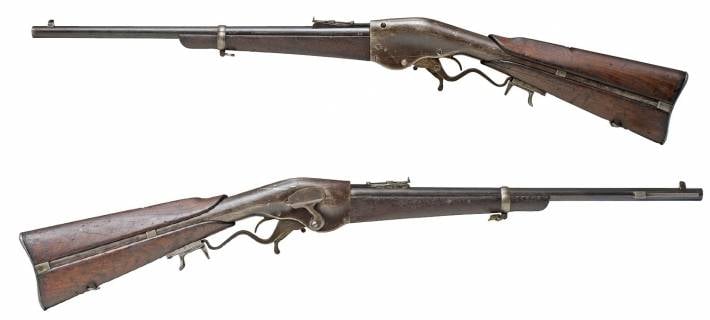
One of the most popular domestic models of handguns with a shop of sufficiently large capacity is the Bison submachine gun. The unusual type of weapon and the design of his shop made this submachine gun very recognizable even by people who are not interested in weapons. This is not surprising: at the time of the appearance of this weapon it was presented as a breakthrough in the domestic arms industry, casually mentioning the software Calico.
But what if I told you that in the hands of a Russian sailor you could see a rifle with a similarity of auger shop back in the 1878 year, long before the now popular submachine guns with similar device shops? I hope that I am interested in this statement, so let's get acquainted with the great-aunt of the Bison submachine gun - Evans rifle.
A few words about the constructor and story Evans rifles
With the beginning of the use of metal sleeves in the cartridges in the market of firearms rifles and carbines began to appear en masse, which could boast a large magazine capacity. In terms of innovations, the old Europe, while trying to be the center of attention, could not keep up with the United States. It was in the USA in the second half of the 19th century that many unique types of weapons appeared, which could boast not only their interesting design, but also quite good characteristics, which are not bad for their time, of course.
It is worth noting that, despite the huge number of new, very promising types of weapons of the time in the United States, only a few entered the market and received at least some fame and distribution, and among these units was an Evans rifle.
Warren Evans was neither a hereditary gunsmith, nor a designer by training, moreover, his specialty was very far from the world of firearms - he was a dentist. However, neither the lack of technical education nor the high level of competition among gunsmiths prevented him from creating weapons with one of the most interesting power systems.
Oddly enough, the main idea at the start of designing a new rifle was not a weapon shop, but the barrel bore locking system, which, to make one's soul, was very similar to the work of Spencer’s locking system - a swinging bolt actuated by a lever. However, the similarity of the designs did not prevent Warren Evans from obtaining a patent for his bolt group in 1868. With the receipt of the patent, the self-taught designer did not launch the production of new weapons, knowing full well that it would not withstand the competition. For a new rifle, it was necessary to invent something new, something others did not have that would ensure this weapon a guaranteed success. This is the "chip" of weapons became the store increased capacity. An interesting point was that the designer did not patent his shop separately, but patented a bolt group, which in addition to reloading weapons, activated the mechanism of the shop. Perhaps the reason for this lies in the fact that the very design of the store was invented in ancient Greece, but, of course, it was not used to supply ammunition to power a firearm.
With the receipt of the latest patent, Warren Evans and his brother decided to start producing new weapons, which was done in 1873. On the basis of the enterprise for the production of agricultural equipment, the production of Evans rifles was launched, the very new arms company was named Evans Rifle Manufacturing Company. In order to assess the scale of production, it suffices to say that we worked in the entire arms company of the entire 25 man. It seems to be funny, especially by modern standards, when there are crowds of “effective” managers above each worker. However, this did not prevent the company from releasing more than 12 thousands of rifle units in very short periods, receiving government orders from the US Navy, supplying their weapons during the Russian-Turkish war and aiming with guaranteed success in the civilian market. That is, it is safe to say that a person’s talent was not limited to the designer’s abilities, but he showed himself to be a very good organizer in the management of an enterprise. Unfortunately, about how he was a dentist, history is silent.
In order to close all the niches in the market, rifles were produced in three versions: for the civilian market, as well as military options in the form of a rifle and a carbine. Fundamentally, they were absolutely no different, only the magazine's capacity and trunk length differed.
The first thing Evans offered his weapons to the US Army, where he was abandoned. The cause of the failure was the ammunition that was used in the weapon. The fact is that at that time Evans offered his rifles and carbines, feeding on the cartridges of his own design. Evans’s proposed cartridge consisted of a metal sleeve of a length of 25,4 millimeter, a shell-free lead bullet of 13 grams and two grams of gunpowder. The initial speed of the bullet was 255 meters per second, which even in those times was a very average result. This cartridge was designated as .44 Evans.
Own version of the cartridge was the main mistake of the designer, since no one had the desire to switch to a new cartridge, and Evans could not develop the production of a new ammunition on such a scale to meet the needs of a potential customer. As it turned out later, the weapon could be easily adapted to almost any ammunition. It would be much more logical to develop a rifle for the ammunition common at that time, and only then, with the advent of certain success, introduce your own cartridge, but only those who do nothing at all do not make mistakes. In addition to ammunition, the US army was not satisfied with the fact that the cartridges were not recorded in the store, which made the weapon turn into a rattle, but nothing could be done about this drawback without reducing the reliability of the ammunition supply. Subsequently, the designer made versions of his weapon chambered for .44-40 and .44 S&W Russian
But they became interested in weapons in the Navy. These rifles began to acquire as a personal weapon of the crew. By the way, according to one version, it was in this way that Evans rifles first fell into the hands of Russian sailors. One of the ships acquired by the Russian Empire was equipped with these weapons. I liked the new rifles so much that there was even an order, not only for the Russian fleet, but also for the army, which was not destined to be completed, but more on that below.
The real success of the weapon received during the Russian-Turkish war, this is the second way in which rifles and carbines fell into the hands of our compatriots, however, in the form of captured weapons. As mentioned above, Evans’s store rifles and carbines were very interested in the Russian Empire, and the money raised from the sale of weapons to the US Navy and supplies during the Russian-Turkish war allowed the designer to expand production to meet the needs of a sufficiently large army. In 1879, the designer demonstrated a rifle and a carbine chambered for .44 Russian, which fully satisfied the potential customer. Immediately, after familiarization with the weapon, a list of requirements was made that made purely cosmetic changes to rifles and carbines. Even negotiations began on concluding a contract for the production and supply of these weapons to the Russian army, but ... the weapons company Evans Rifle Manufacturing Company closed.
Rather, the arms company was closed. All in the same year 1879 Oliver Winchester bought out Evans and patents and production, after which the production was closed, and the patents were not used anywhere else. As long as the weapon was only gaining popularity, and the company's production capacity was small, large representatives of the arms market did not pay attention to the small arms company and the new weapons. However, as soon as the threat of losing their homes appeared, Winchester acted as before: he bought and simply threw away a more promising project than the projects of his own company.
It is difficult to imagine the amount that Evans could agree on, provided that on the nose were supplies of weapons to one of the largest countries. He had the opportunity not only to earn enough big money, but also to leave his name in history along with famous gunsmiths. Perhaps the proposal was one of those that cannot be refused, which was quite in the spirit of Oliver Winchester, but now it remains only to guess, since there is no intelligible information, of course.
So the weapon became a “victim” of the Winchester company, like the Spencer rifle similar in design to the bolt group, as well as dozens of other promising developments. But this topic of “victims” by Oliver Winchester is worthy of a separate article, let us return to the Evans rifle.
Evans rifle design
As it was already written above, the basis of the design of the weapon was a swinging shutter, controlled by a lever, similar to the Spencer shutter. Like the Spencer rifles, ammunition was supplied from a magazine that was built into the butt of a weapon. Thus, when the bolt opened, the cartridge case was removed from the chamber and rolled itself, in the process of extraction, or dropped out when the valve was closed, pushed by the new cartridge.
It must be said that at that time the stores located in the butt of rifles were a rather “fashionable” phenomenon. Many predicted that in the future it would be in the butt that the weapon shop would be located, and everything else was living its last days. In principle, such reasoning is quite logical, because the butt is used maximum for storing cleaning supplies, but the time and further development of handguns decided otherwise.
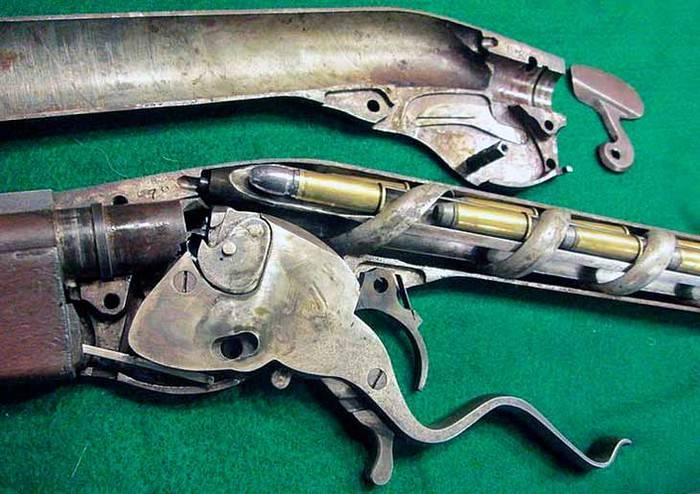
The main feature of the new rifle was its store. It is implemented a little differently than modern screw shops, but the essence remains the same - the spiral arrangement of the ammunition and their supply when turning the shaft holding the cartridges. The design is called "Archimedes screw" and is a shop for this weapon. Inside the hollow tube there is a fixed guide, curled in a spiral. In the center is a rotating shaft with four valleys to hold ammunition. It should be noted that the shaft itself can be any "star-shaped" in cross section, it all depends on the dimensions of the ammunition and the store itself.
It all works as follows. After the shot was fired, the shooter unlocks the bolt by the lever, at this moment the spent cartridge case is extracted and it is placed on a tray made with a separate part on the right side of the receiver. Simultaneously with the extraction of a spent cartridge case, a moving protrusion protrusion in the body of the bolt rests on one of the faces of the shaft of the weapon store. Its movement causes the shaft to rotate slightly less than 90 degrees. In the process of turning the magazine shaft, absolutely all the cartridges rest on the ends of the sleeves into the spiral guide and move a quarter of their length forward. Thus, when the shutter is fully open, the bottom of the sleeve of the new cartridge appears in the path of its movement. At the moment when the shooter closes the bolt, the body of the bolt enters the groove on the shaft of the magazine, aligning it and pushing the new cartridge into the chamber.
In the first versions of Evans' magazine rifles, shells were ejected through a hole in the receiver on the right side of the weapon. Subsequently, this hole was closed with a lid, which moved with the rifle bolt. Thus, the rifle was completely protected from dust when the bolt of the weapon was closed.
After the expenditure of the magazine, the magazine was equipped with one cartridge each, through the hole in the buttplate of the butt. Moreover, after the new cartridge was inserted, the arrow had to be pulled by the shutter lever, and so for each new cartridge inserted into the magazine.
Such a simple construction, without springs, without small difficult-to-manufacture parts, made it possible to place a large amount of ammunition while maintaining small dimensions of the weapon.
Positive and negative qualities of an Evans rifle
The main advantage of the dentist Evans shop rifle was its roomy store. Military options rifle and carbine could shoot 36 once without replenishing ammunition. The civilian version had a smaller capacity shop - 24 cartridge. If we talk about the capacity of the weapon shop from the point of view of its practical use on the battlefield, then one experienced shooter could make 36 shots in 19 seconds, 10 shooters already did 360 shots in the same time. At a time when military clashes took place between opponents going to wall to wall, ten shooters with such weapons, literally, mowed everything in front of them in a very short period of time. The advantages of such a rate of fire without pauses to replenish the store were obvious, but there were also disadvantages.
Oddly enough, but the main disadvantage of Evans rifles was back to their same shop. The equipment of the stores was not the fastest and most convenient - after the new cartridge was inserted it was necessary to set the bolt in motion, which took a lot of time. But this was not the main drawback of Evans shop rifles. The main negative point was that the store could not be replenished with ammunition in full, until the cartridges were spent after the previous replenishment of the store. For example, from 36 cartridges, only 10 was spent and there was time to replenish the gun shop. The shooter pushed the new ammunition into the store, pulled the shutter lever, the store swallowed a new cartridge, but at the same time the rifle “spat out” one of the unused ammunition. Thus, in order to replenish the store of his rifle to the maximum capacity, the shooter needed to move the old cartridges from the beginning to the end of the store, one by one, and then add new ones to them, so that between them there would be no empty gaps. In other words, with the full equipment of the store, and when it was replenished, 36 had to torment the shutter lever once, spending practically equal periods of time on the procedure.
It is worth mentioning that in some sources there is a description of a rifle, with a hinged lid for equipment weapons store. Such a design would really significantly accelerate the reloading and simplify the replenishment of the still not empty store with new ammunition. However, apart from textual references to such a design, I personally could not find a single image with this flip cover. So it is quite possible that such a device or inaccuracy in the translation, or it is a question of single versions of the weapon, but clearly not a mass phenomenon for Evans rifles.
Conclusion
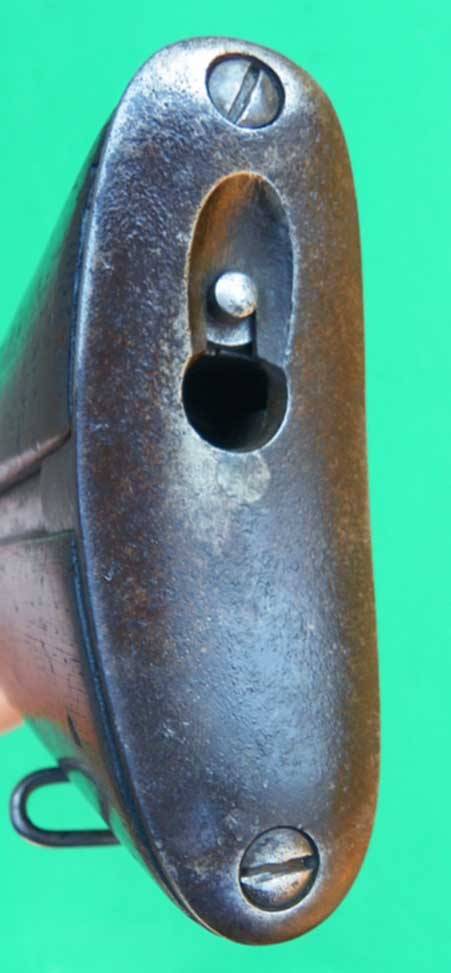 No matter what they say, far from all successful designs of weapons find their place in history. The Evans rifle perfectly demonstrates that under the action of a number of circumstances, a weapon that is very promising and superior, in its individual parameters, other samples of the same class of its time, can be forgotten as the designer designed it. Of course, you can refer to the fact that, perhaps, the weapon was not so good, since it did not occupy a certain place in history. But the adoption of the US Navy, the supply of a rifle during the Russian-Turkish war, its proliferation in the civilian market, interest in arms in the Russian Empire and, in the end, the actions of Oliver Winchester say quite the opposite.
No matter what they say, far from all successful designs of weapons find their place in history. The Evans rifle perfectly demonstrates that under the action of a number of circumstances, a weapon that is very promising and superior, in its individual parameters, other samples of the same class of its time, can be forgotten as the designer designed it. Of course, you can refer to the fact that, perhaps, the weapon was not so good, since it did not occupy a certain place in history. But the adoption of the US Navy, the supply of a rifle during the Russian-Turkish war, its proliferation in the civilian market, interest in arms in the Russian Empire and, in the end, the actions of Oliver Winchester say quite the opposite.Do not make Warren Evans mistakes with the development of weapons on the basis of his own cartridge, perhaps this rifle could be used by the US Army, and having large and, most importantly, regular orders in hand, it was possible to acquire both financial capabilities and suitable friends. it was possible to oppose Winchester. Nevertheless, even with its own patron, the weapon was able to participate in a military conflict and serve in the public service, not to mention the civilian market. According to various sources, such characters from history as Buffalo Bill, Keith Carson and others possessed a store rifle from the dentist Evans. So, weapons left their mark on history, and it is mostly known only to those who love the Wild West and those who are interested in the history of weapons.
Perhaps if Oliver Winchester did not interfere in the affairs of Evans Rifle Manufacturing Company, we would now know another major firearms manufacturer with a history. Perhaps, domestic weapons could have taken a different path of development with the extensive use of auger stores, but, unfortunately, it was all over, without really starting.



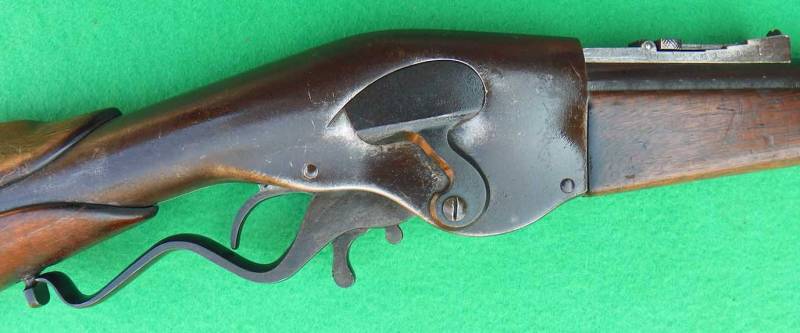
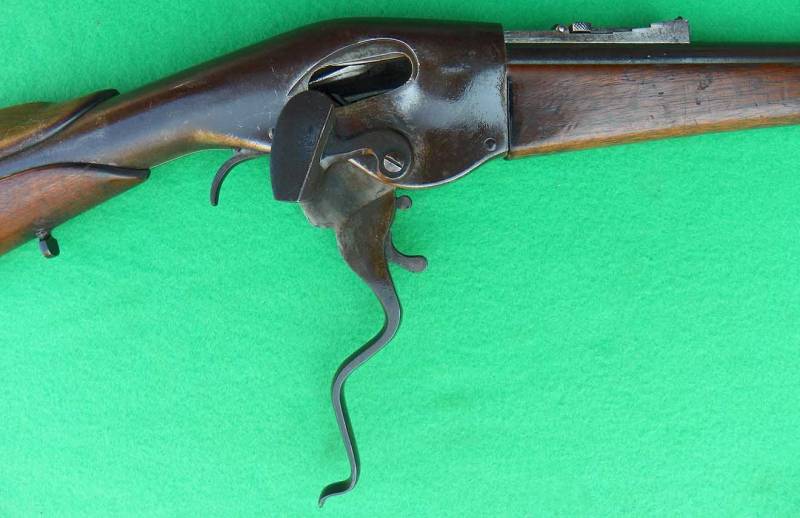

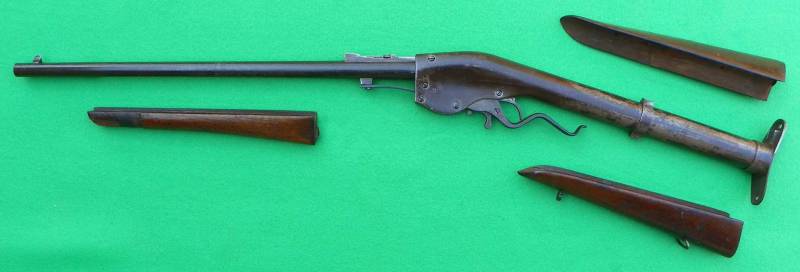
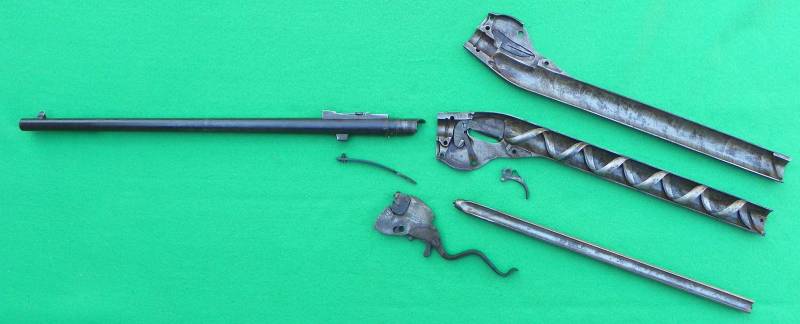
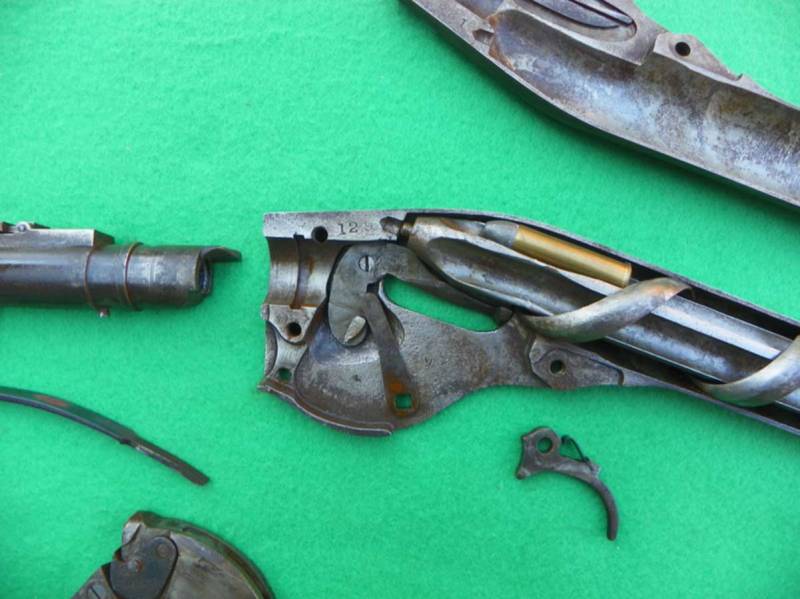
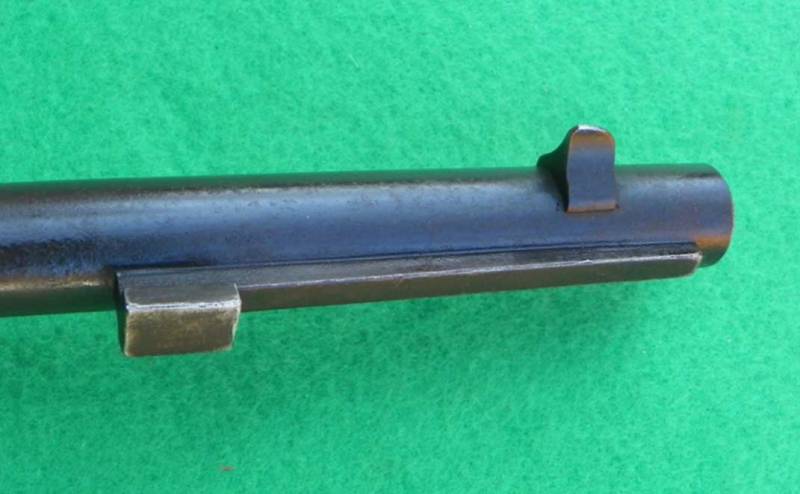
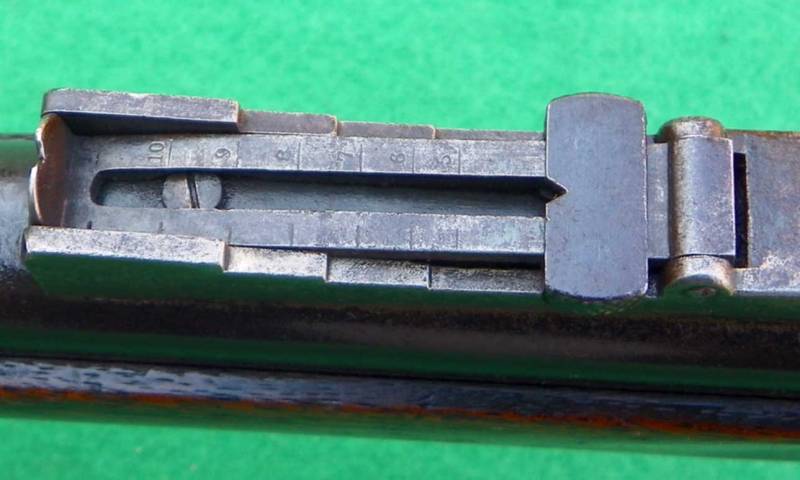
Information